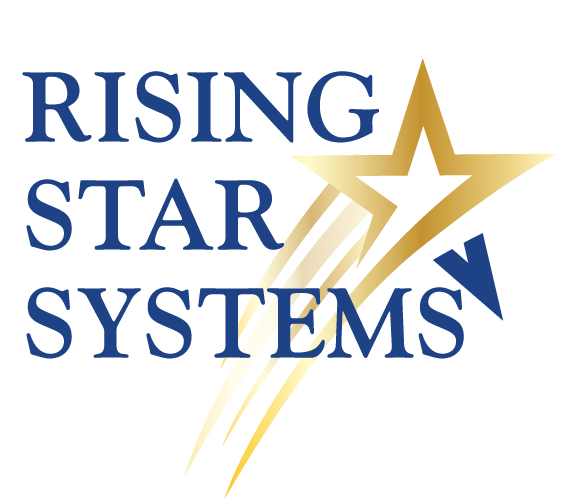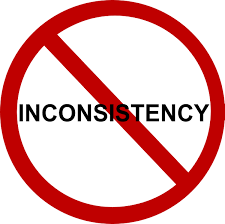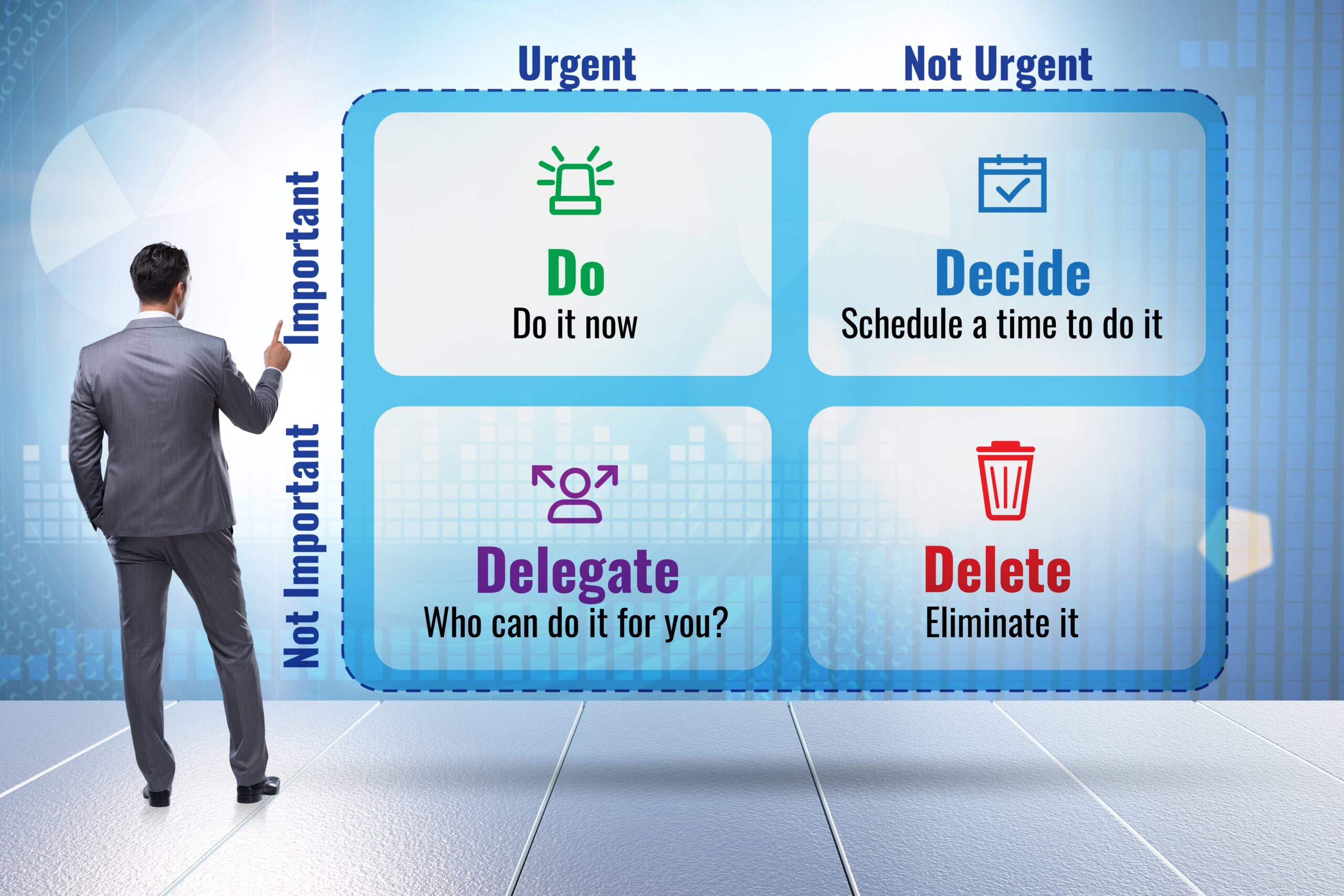What it feels like:
There is no consistency to my success. I start marketing, then I get too busy to market and then opportunities begin to dry up and so I get back to marketing….
- You make a commitment to working on your career and you’re good for a few days or weeks, but then it all seems to fall apart.
- You can’t seem to stay focused over the long term.
- You finally figure out how to get motivated and into action and you start getting results, but then it all becomes overwhelming and you either make yourself sick, drop the ball on opportunities or you are bewildered by why the opportunities just seem to have disappeared.
What I’ve discovered working with my private clients on this challenge is that while it shows up as one thing, when we break down what exactly is happening, it can have several different causes.
In my experience, the most common causes of this experience are:
- A lack of systems and people to support the increased activity,
- Accepting any and all opportunities for fear that saying no to any one opportunity means saying no to all opportunities (or worse, that there will be no other opportunities)
- A lack of understanding of your own energy and balance requirements
- Fear (which I will address in Challenge 7).
Success Solution:
So, let’s take on these three challenges, one at a time.
Lack of Systems and people to support the increased activity
The key here is to actually develop the systems BEFORE you need them. When you’re gearing up your marketing during a slow time, also create the systems that will sustain you when all of your marketing pays off.
How do you create a system and what is a system exactly? A system is a series of repeatable action that gets you a predictable result. A system can be as simple as a checklist.
When you think about all the things that you do in your creative business, marketing for new gigs, promotion of those gigs, delivery of your product, increasing your fan base, making new contacts and following up with those contacts. All of these actions beg for the creation of a system because, for the most part, the actions you take are the same or very similar each time.
So, begin tracking those actions – as you do them, write a list, or bullet points for each step.
Create templates for your materials. For example, your marketing package should be almost identical no matter who you’re sending it to. With the exception of the cover letter, which can be almost identical except for the name and a personalized paragraph, the body of the letter is going to be exactly the same. So create it in advance.
Set up a mailing center for putting together your packet. Create a checklist of all the things that go into it and make sure you have those supplies. What’s great is that once you have this system set up, it becomes really easy to give it away to a volunteer, intern or paid assistant.
Accepting any and all opportunities
The second cause of this challenge is the lack of discrimination when it comes to choosing your opportunities. When you get specific about your Goals and your Vision, and you get into action working towards those goals, the Universe will begin sending lots of opportunities your way. That’s great, right?
But, what I’ve seen happen to some people, especially when you’ve been struggling for a long time without a good flow of opportunities, is that you grab each, every and any opportunity. By saying yes to everything, you can quickly become overwhelmed and you will start wishing things would just slow down a bit.
Just like the Universe responded to your shift in energy by sending lots of opportunity, it will respond to your overwhelm by slowing the flow of opportunities. And so you get the roller coaster effect.
How do you solve it? Well, the first step is to trust that the opportunities will continue to flow as long as you continue to be specific about what you want and stay focused on creating what you want and stay in action moving towards what you want.
Success Principle Number 43 in Jack Canfield’s “The Success Principles” is “Say No to the Good, So That You Can Say Yes to the Great.”
The solution to this challenge is very simple: learn to be discriminating and discerning about your opportunities. In advance, write up some criteria for what makes a good opportunity for you where you are now in your career. And be ready to revise those criteria at least once a year.
As your career progresses, what defines a good opportunity for you will change and must change. One thing that keeps people stuck in their career is not learning how to say no to opportunities that are no longer appropriate for their career.
Look for the opportunities that are going to raise the stakes of your game, the opportunities that stretch you out of your comfort zone. And say no to the opportunities that drain your energy and keep you from going after the bigger game.
Another thing that will really help in your assessment of your opportunities is to create a really specific and powerful, written Vision of your career. When you have an opportunity that you aren’t sure of, read your Vision and ask yourself:
- Does this opportunity move me closer to my vision?
- Is it a distraction?
- Does it change what I want? (Remember, Visions are living documents and may need to be adjusted from time to time.)
- Does it allow me to skip steps to get closer to my vision?
Use the answers to these questions to help you choose the best right opportunities for your career at this time.
A lack of understanding of your own energy and balance requirements
Understanding how your body, mind and psyche respond to stress is a key component to creating a sustainable career. For example, understanding that when you travel, you need recovery time before entering back into your life full steam ahead and knowing HOW MUCH TIME you need (not what you “should” need, but what you as an individual actually need) and scheduling downtime after travel appropriately.
And when your opportunities are flowing and you’re creating your prosperous career doing what you love, remember that you can only do one thing at a time. One baby step. One small action. A marathon is run one step at a time. And the real long distance runners understand that you need to break up your pace.
You need both highly active time and down time, or you will burn out and you will be unable to do anything until you recover. So, take care of yourself:
- Get 7.5-8 hours of sleep EVERY night.
- Eat healthy food, especially when you’re under stress.
- Get exercise.
- And rest when you need to rest.
In this way you will be able to sustain your energy and maintain our momentum so you can stay in action – one baby step at a time.
This includes asking for what you need at your gigs. Ensuring that you have a break between travel and performance, for example, can make a huge difference to how long you can sustain a tour. Be willing to stand up for yourself when it comes to your physical needs. We’re not talking about green M&Ms, but what you really need to operate at your best. It’s OK to need what you need. And it’s absolutely necessary for you to ask for what you need.
Recommended Actions
- Create a list of what activities would most benefit from a system
- Schedule time every week to create your systems. Hone and document the systems you have so that they are completely ready to be handed off to an assistant
- Write a list of Criteria or Guidelines for your opportunities. To get you started on that list, start with these questions:
- What is your rate for a gig, or your price list for your product or services?
- A good gig is one that pays your rate, exposes you to an audience or venue that you wouldn’t be able to access otherwise, or serves a cause that you are passionate about. Identify in advance the specifics of each of these areas.
- How far will you travel in a day? Maximum
- How many hours a week will you work? Minimum/Maximum
- What are the characteristics of the ideal gig for you at this time?
- What are the non-negotiables for you – what are you unwilling to do or what must a gig have for you to take it?
- Create Your Vision and read it often.
- Take care of yourself always. Including:
- Drinking enough water
- Sleeping enough (and it’s helpful to go to sleep at roughly the same time every night)
- Eat well – enough vegetables and fruit, and for the vegetarians, enough high quality protein
- Exercise every day – even if it’s stretching or a walk around the block
Additional Resources:
- How to Manage Conflicting Priorities – Article
- How to Maintain Consistent Growth and Development – Article
- Goals and Success – Article
- Systems Creation – Work Smarter, Not Harder – Class
- Managing Conflicting Priorities – Class
- Goals That Get Results – Class
- 5-Year Plan: Got Goals? Get a Plan – Class
- Project Management – The Key to Getting Stuff DONE! – Class
- Motivation and Momentum – Class
See all of your current Success eCourse
Return to your Success eCourse Home
Save
Save





